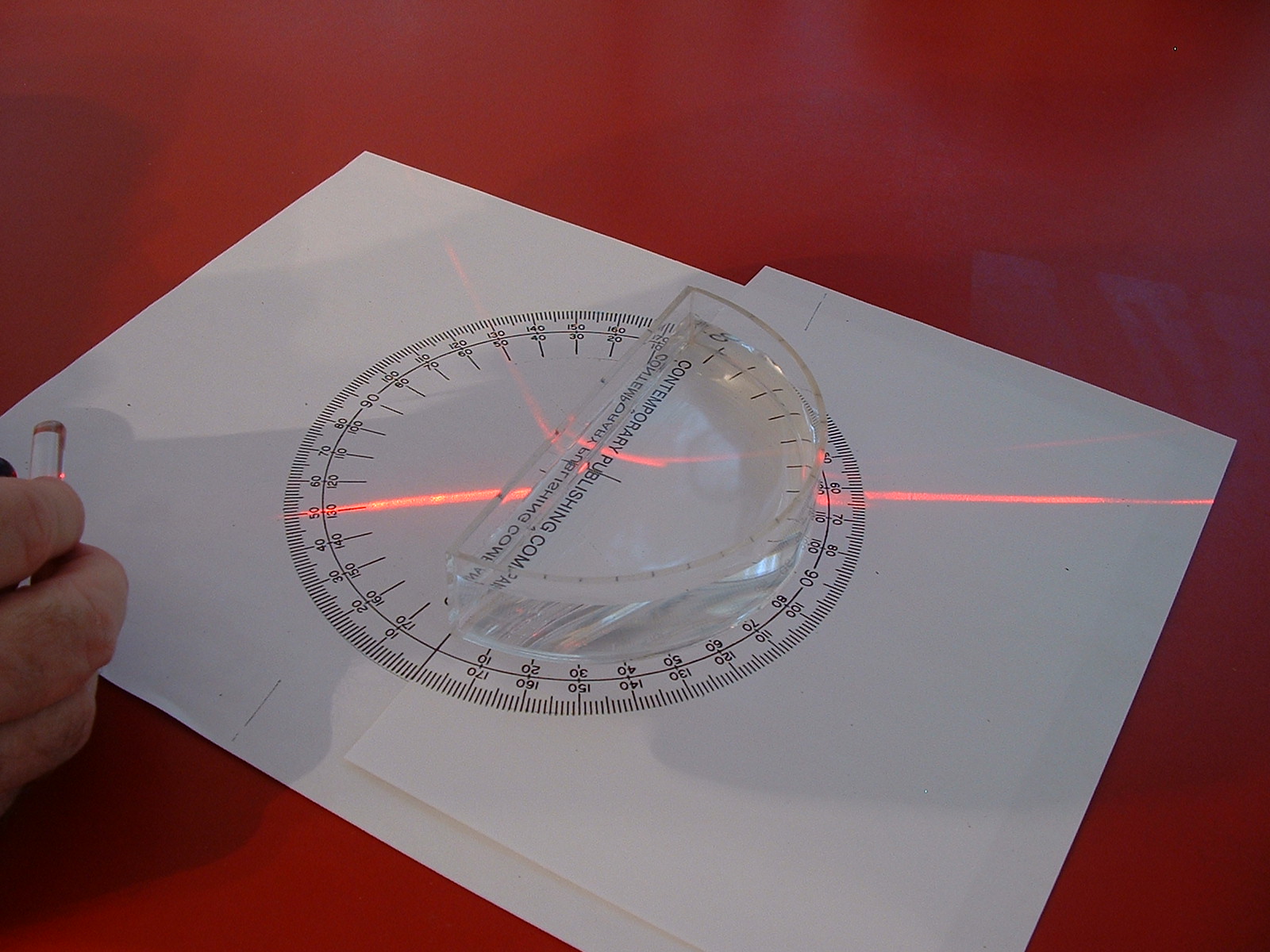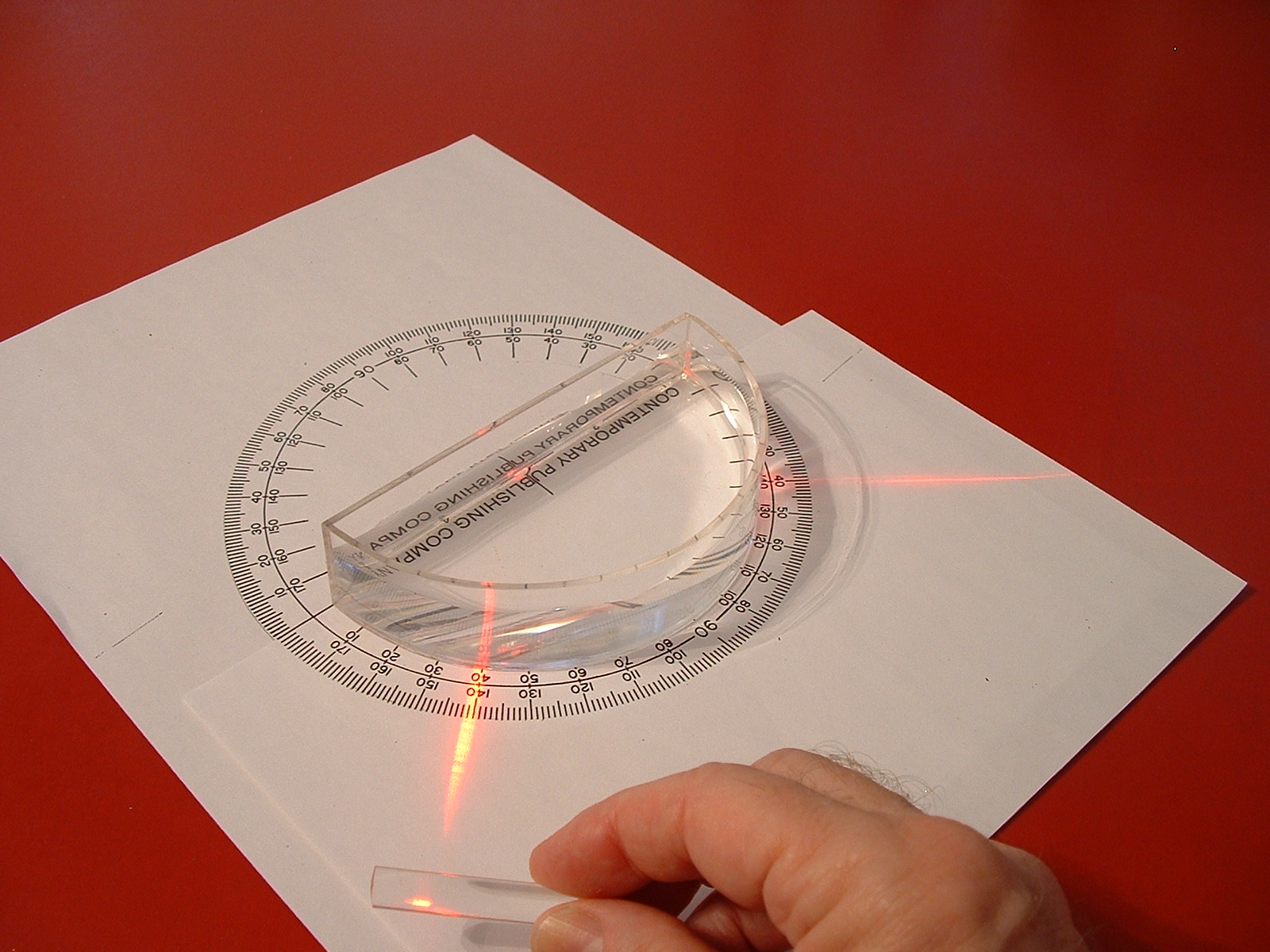
PHYSICS AND THE VISUAL ARTS
Notes on LAB 3
REFRACTION and TOTAL REFLECTION
Activity 1, Part I.2.
Cut out one of the protractors and align it so that its center line matches up with that of the other one.
Align the semicircular tank so that its flat edge is along the dashed reference line on the protractor. Fill the tank
with water. Use the lucite rod to spread the laser beam as in Lab. 2 and direct it to the center of the tank as shown
in Fig. 1. below.

Fig. 1. Refraction of light by water.
Notice that there is a weak reflected beam from the front surface. If you have arranged everything carefully the
reflected beam will emerge at an angle of reflection that is equal to the angle of incidence as seen here. In the case
shown in Fig. 1, the angle of incidence is 40°.
The light continues through the water and emerges striking the protractor. Because of the index of refraction of the
water the light does not strike the paper below the water. In the photo above, the angle of the emerging light (the
angle of refraction) is approximately 25° from the normal.
If everything is aligned correctly, the refracted light beam strikes the curved face of the tank normal to its surface.
Consequently, there is no refraction at that surface and the emerging beam is at the angle determined by the
refraction of the light at the front surface. You may wonder about the effect of the plastic walls. Because the inner
and outer surfaces of the walls are parallel, they do not affect the path of the light except for a miniscule offset.
That is, they do not affect the refraction in the water. It is as if you were directing the light onto a water
surface.
Activity 1, Part II.2 & 3
In this step you are to reverse the direction of the light. Be careful to direct the beam radially so that there is no
refraction as it enters the curved surface. As the angle of incidence is made larger, eventually no light emerges out
the back side (the flat side) and the light is totally reflected as seen in Fig. 2.

Fig. 2. Total internal reflection occurs when the angle of incidence exceeds the critical angle.
In this part of the experiment you should try different angles of incidence to determine the critical angle, that is,
the angle beyond which the light is totally reflected. In the figure you can see that the critical angle is less than
50° as no light is transmitted for incident light striking the back surface at an angle of 50°.
Study Fig. 2 carefully to be sure that you understand the set up and that the angle of incidence shown in the figure is
really 50°.
Back to PHYS 153 Home
Back to Physics Dept web page.
Back to USC home page.
Last Modified: 07/13/11
Maintained by:rjones@mail.psc.sc.edu



